One thing is certain; the more I teach, the more I learn. There are so many technical lessons: lessons about values, lessons about color, lessons about edges, lessons about composition, lessons about materials. We need to master all these skills and train our eyes to see, calculate, and arrange the elements of our painting in order to create a good work.
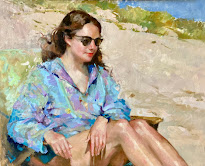
by Katherine Galbraith OPA
30″x36″ – Oil on canvas
But there are a few lessons that fall into none of these categories. I have come to believe they may be the most important lessons of all. These are more ephemeral lessons that help us create the paintings that come from our hearts. Lessons that keep the joy of learning alive and help us to follow our hearts.
1. The first, and most important lesson, is to allow ourselves to fall in love with the beauty around us. Here I’m paraphrasing several well-known artists: Dan Gerhartz OPAM, Kathie Odom OPA, and the late Richard Schmid. I heartily agree. The first workshop I took, about 5-6 years ago, was from Michelle Dunaway at The Barn in Putney, VT. One of the first things Michelle said, quoting her mentor, Richard Schmid, was this “No camera ever fell in love with its subject, but every artist does”. I remember thinking, oh my gosh, I’ve always felt this way, but thought maybe I was crazy! Certainly I’d never heard another artist say anything like this. Immediately I knew I was in the right place.
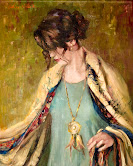
by Katherine Galbraith OPA
20″x16″ – Oil on linen
Our very best works are those created when the subject moved us deeply, spoke to our souls, and created a sense of wonder and awe within us. I’ve often been told, “I don’t see what you see!” But this is teachable. What I cannot teach is how to fall in love with your subject. That has to come from within. When you become so motivated by the scene in front of you, whether it’s a portrait, landscape, or still life, you’re hooked! When the play of light across the scene dazzles your eye and engages your mind, you have already begun a fine painting, whether or not you even have a canvas in front of you. Beauty is the job of the artist – finding it, appreciating it, and presenting it to the world so that they can see it, too. I’ve always considered this a sacred trust, the special gift God has given artists that keeps us motivated and on fire.
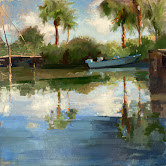
20″x20″ – Oil on linen
2. The second most important lesson is self-confidence mixed with a healthy dose of humility. Now this one is tough, because it takes so much work on the part of the student to develop the skills and the eye to trust their instincts. Trust me on this one, I’m still learning. But the more we paint, the more we surround ourselves with people who desire our success and don’t hesitate to point out areas where we are succeeding, the faster we can go down this path. I think a lot us have that nasty little voice in our heads telling us how far short we are falling, and if we listen, we wind up ruining a shocking number of paintings that had real potential. I’m always telling my students, we are all beginners! Every one of us started out as a beginner, even the very best artists, so don’t be too hard on yourself. Some will stay the course, some won’t. Life may have other ideas for you, and that’s fine. But for those of you who want to continue to pursue excellence in art, stay away from those who are way too good at finding fault. The world is full of them. It’s a much faster learning curve to play from your strengths rather than always focusing on your weaknesses. I’m not talking about Pollyanna friends who only tell you what they think you want to hear, I’m speaking of the true friend who recognizes your gift. We all need encouragement and honest criticism. Here’s another way of putting it: if you teach, do you teach your students to paint like you, or is your goal to give them the skills to paint like themselves? We all have an artistic voice; it’s as natural as speaking or hand writing, but if the student’s goal is to learn to paint like the instructor, that voice is going to be hard to find. Choose an instructor who will be able to help you become the best artist you can be.
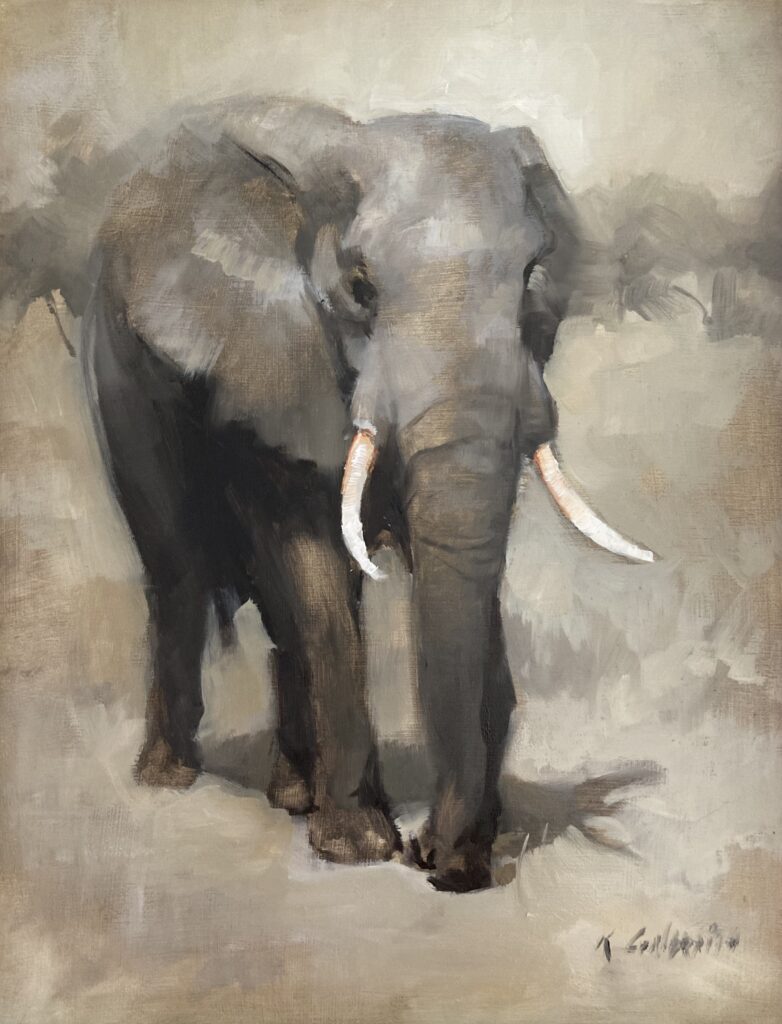
by Katherine Galbraith OPA
14″x11″ – Oil on panel
3. Which leads me to the third most important lesson: learn to value yourself and your art. You have a gift, you have a voice, and you’re learning the skills. Now it’s time to value your art and respect it. You’re giving so much of your heart, soul, skills, and time to your art, don’t demean it. If you’re not sure about the value of your work, ask someone you trust to help you evaluate your work. Sometimes we can’t see it for ourselves.
We artists are tender souls! We are so easily beaten up by shows that pass us by. This is a good thing in many ways. It raises the bar for us, and teaches us not to take ourselves too seriously. Also, if we’re smart, we’ll go through the accepted works and carefully (and honestly!) look at the qualities that made one work more “juryable” than another. And there’s plenty more blank canvases waiting for you….. The best painting any of us has ever done is…the next one.
4. And finally, the last most important lesson is this: never forsake the love of learning and following your heart! Challenge yourself – there’s always more to learn, more to see, more ways to see, and more ways to paint.
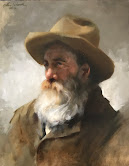
by Katherine Galbraith OPA
20″x16″ – Oil on linen
I’m fascinated by artists who experiment and really push the envelope. Quang Ho OPAM is a great example. When talking about a trip to the mountains of West Virginia in the fall, he said he pulled over to the side of the road, took out his painting equipment, and started hiking. Before long, he was so overwhelmed by the beauty of the forest he put away his paints, and just continued to hike, soaking up the experience of being enveloped by the amazing world he was experiencing. Instead of painting for two weeks, he took the opportunity to immerse himself in the beauty that surrounded him. Within a year, he was creating some of the most dynamic, original, and beautiful paintings of his career. It’s so exciting to see what others are creating. It’s a big, beautiful world out there, full of so many interesting things and people who have much to teach us.
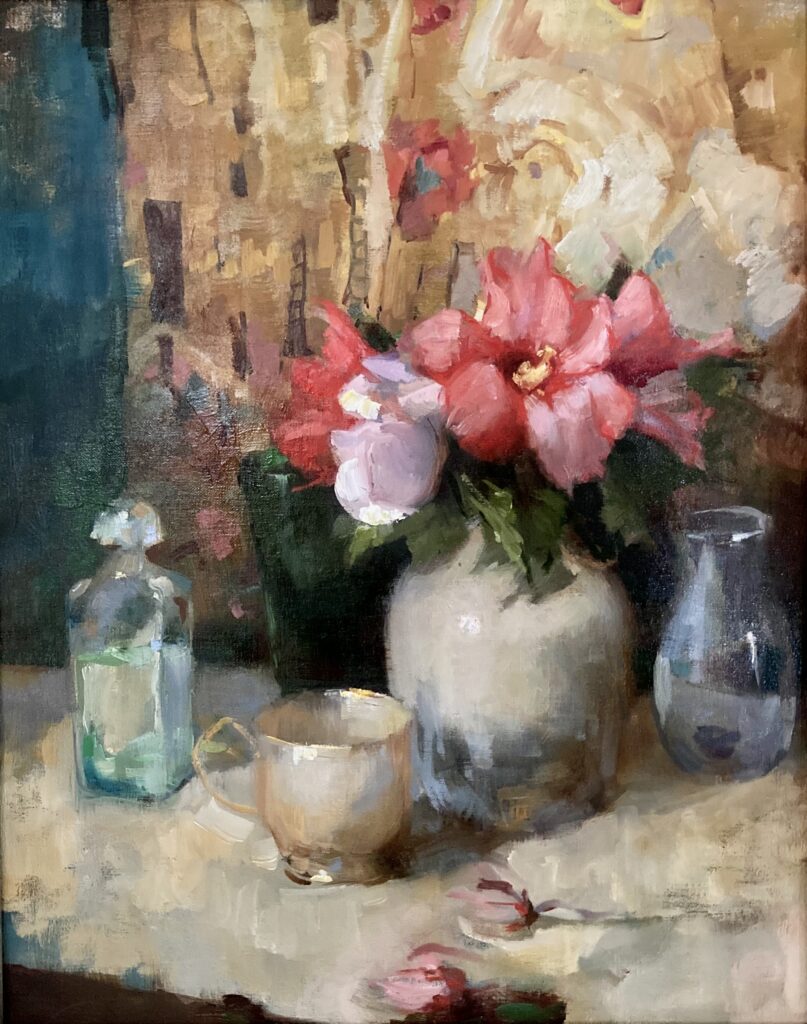
20″x16″ – Oil on linen
Last summer I spent all my time working on one project, “Painting the Faces of Chautauqua”. I painted as many portraits as I could of the people who live in our little farm and winery community. It was such an eye opener for me! Some of the most interesting people were the farmers and laborers – no one checked their mascara or lipstick, I can tell you! But it was such an enriching experience, on both sides of the easel. I gave myself a 3 hour limit per painting. It was encouraging to see my work improve over the summer. In the end I painted 44 portraits, and I had the joy of getting to know all these wonderful people! Just getting to paint a bald head was a treat, to see the skin without muscle beneath it, stretched over the skull: I was in heaven. And, since they were not paying me, they had no input! To be fair, only one person asked me to change anything. Most everyone thanked me profusely for opening their eyes to the world of art. In the fall we had a reception open to the community to view the portraits. It was packed! Everyone had a good time finding themselves and their friends “in paint”.
You just never know where things will take you if you follow your heart, so don’t be afraid to take up a challenge. It could change your life.
Kathleen Williams says
Wonderful article. Well written, so true, so inspiring.
Katherine Galbraith says
Thank you, Kathleen. I’m glad you enjoyed the article!
Katherine
Ellen Howard says
Wonderful article and insights:)
Katherine says
Thanks so much, Ellen!
Katherine
Kalinowski Kalinowski says
Thank you Katherine for the excellent essay! It was insightful and encouraging. Currently, I am painting everyday, a small work from my sketches, photos and plein air ideas. From these I hope my work will improve as I paint larger landscapes. My goal is to infuse my landscapes with more emotion, mood and mystery. I also teach though I can see where a mentor would be helpful for myself as well (lesson 2 & 3). I loved your summer project, a fabulous way to improve your skills and it sounds like it was also fun.
Happy painting,
Kathleen
Katherine says
Kathleen, congratulations on your passion for art! Your diligence will definitely reward you. Painting what you want to paint, the way you want to paint, is such an exciting (and challenging!) thing to do.
Thanks for your kind words,
Katherine
Mario Vargas says
Beautiful article, thanks.
Katherine says
Thank you, Mario.
Katherine
Larry says
Spot on! Immerse yourself. Katherine, you write as well as you paint.
Katherine says
Larry, thanks; you made my day!
Katherine
Ginny Butcher says
Just what I needed at just the right time! So well said and such a good reminder and encouragement. Thank you!
And gorgeous paintings!
Katherine Galbraith says
Ginny, thank you! I’m so glad the article gave you some insights. And thanks for the compliment!!!
Katherine
tunnel rush says
So impressed!
Katherine Galbraith says
Thank you!
Katherine
Susan Neese McKinney says
Thanks so much for your wonderful encouragements. I’m guilty of all the insecurities you mentioned, especially in the last couple years. Low to no sales, all the show rejections! It gets pretty discouraging!
I need to print out your words and read them every day or two….. In the meantime I keep trucking along with the belief that with continued work and practice and persistence things will open up for me and the future.
Thanks again, yours in art,
Susan Neese McKinney
susanneese.com
Katherine Galbraith says
Susan, thank you so much. I’m honored that my article spoke to your heart. It means a lot to me –
Katherine
quordle says
We must be very careful when reading blog posts. I already did it, and I think this post is great
Katherine Galbraith says
Thanks so much,
Katherine
fnaf says
This information is just exciting and new. I’ve been trying to decide where to go to school, and this has helped me in one way
Katherine Galbraith says
Thanks! What a great compliment – I’m so glad you liked it.
Katherine
run 3 says
I appreciate your contribution. I’ve read a lot about relevant topics! Unlike other articles, yours created a lasting impression on me. I hope you’ll continue to write interesting pieces like this one and others for us all to read!
quordle wordle says
Many thanks for the valuable information you provide. In the future, I hope you will continue to provide everyone with as many excellent postings as possible.